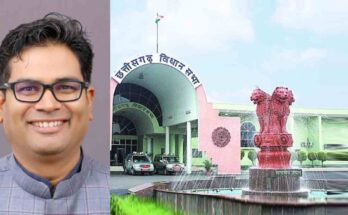New Delhi: July 20, 2020.While the country’s Covid count has crossed the million-mark, with 26,816 deaths as on June 18, the case fatality rate (CFR) has for the first time dropped below 2.5 per cent. At 2.49 per cent, India’s CFR is 1.78 percentage points lower than the global average.
According to data released by the Union Health Ministry on Sunday, 29 states and Union Territories have a CFR that is below the national average, with 14 states reporting a CFR of less than 1%.
While attributing this drop in CFR to “reporting of cases to the hospital within 24-72 hours” of the patient showing symptoms, sources in the government monitoring the pandemic in the country said the data raise a key red-flag: that some of the deaths in states such as Maharashtra and Gujarat, which have a CFR higher than the national average, were “avoidable”.
“The lower national CFR is definitely a silver lining. It only shows that we have to ensure that the maximum number of fatalities don’t occur during the 24-72 hour period (when the patient begins to show symptoms). Bringing the patient early gives the treating clinicians sufficient time to put into place standard of care issued by the Centre and improve the patient outcome, thereby lowering the CFR,” a senior government functionary told .
The source, however, admitted to concerns in states where the CFR is higher than the national average. Among the big states, Maharashtra (3.85), Gujarat (4.48) and West Bengal (2.67) continue to report CFR above the national average.
“In these states, majority of the cases have been coming late to hospitals. Apart from the surveillance being weak and instances of inability to identify and isolate cases, a CFR higher than the national average shows that these were avoidable deaths had the patient come earlier,” the official said.
Also, the source said, Uttar Pradesh, Bihar, Assam and Odisha are being “closely monitored” though the CFR in these states is currently below the national average. These states are also going through a lockdown, either partial or complete.
Besides the southern states, the numbers are also being driven by Uttar Pradesh, Bihar and others. Bihar in the last one week has reported 1,000 cases. Similarly, Assam and West Bengal have also seen a spike. This is the time to rush and tell the state government to focus on containment, tracing, and testing. Also, Odisha is another state which is now under the radar,” the official said.
Among those with CFR below the national average are Telangana (0.93), Andhra Pradesh (1.31), Tamil Nadu (1.75), Karnataka (2.06) and Uttar Pradesh (2.36) – states that have among the highest virus caseloads and which have been driving India’s Covid surge over the last two weeks.
# HCQ for health workers: Scientists from two AIIMS argue against methodology, say more scrutiny needed
The official attributed the low CFR in these states, despite a surge in cases, to the continuous “refinement” of the clinical management protocol issued by the Centre to states.
“As we learn more about the virus, the Centre has defined and continuously refined the clinical management protocol document. This guides clinicians on the standard of care and quality of care. Experts from the Centre keep telling the doctors that standard of care and quality of care is directly linked to the symptom of the disease, followed by monitoring and treating the symptoms as per the guidelines. This is why we have been able to lower CFR,” the official said.
India’s CFR of 2.49 per cent is lower than that of the United States (3.88 per cent) and Brazil (3.81), the only two countries with have a higher caseload than India, according to the WHO’s latest situation report.
On Sunday, releasing the data on CFR, the Centre said, “Many states have conducted population surveys to map and identify vulnerable population like the elderly, pregnant women and those with co-morbidities. This, with the help of technological solutions like Mobile Apps, has ensured keeping the high-risk population under continuous observation, thus aiding early identification, timely clinical treatment and reducing fatalities…”




